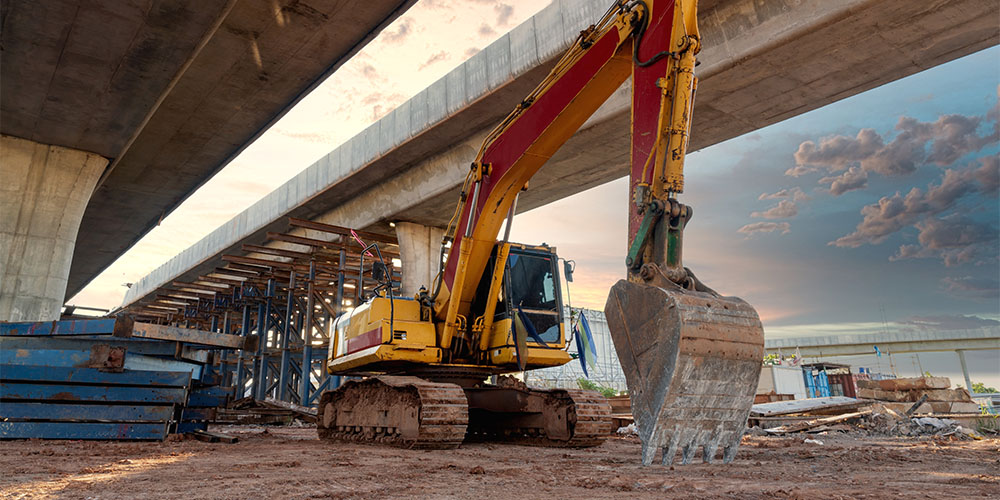— 4 min read
How to Perform a Concrete Takeoff
Last Updated Dec 10, 2024
Last Updated Dec 10, 2024

A key part of the process of securing new concrete projects is estimating them — which in turn requires concrete takeoffs. A takeoff is an essential part of the bidding process involving looking over the plans to determine what materials and labor will be involved in the project. Here's a quick overview of how a concrete takeoff is performed and what you can do to keep the process as simple and short as possible.
Table of contents
Performing a Concrete Takeoff in 5 Simple Steps
1. Determine the feasibility of the project.
Will this project work well for your company's current skillset? Is there anything unusual or unique about it that may take special resources, labor, or materials? If your main tasks are paving, a pump and fill project may not be the best use of your available knowledge, experience and skills. Unless you're trying to break into new areas of the market and are willing to deal with the learning curve and potential losses, you may want to pass on jobs that aren't a good fit. By staying with what you know and can get done efficiently, you're ensuring that the project remains profitable.
Take a good, hard look at the plans, noting anything that is different unique to that project. If it's something that will take extra materials or labor, you may want to take a good look at whether that part of the project can be completed profitably. If you miss something, you could add a change order, but it can appear unprofessional if you weren't aware of the prospective issue on the plans in the first place.
2. Count the non-concrete materials.
Begin the takeoff process by counting how many anchors, how much rebar, how many rolls of reinforcing mesh you'll need to get the job done to get an idea of how much material you'll need. This can be accomplished with colored pencils, pens or markers to mark paper plans, then record those counts to a worksheet or list. You can approach this from a few different directions, but make sure you're doing the same thing consistently and take a second glance at the work to ensure it's correct before continuing.
3. Make a concrete estimate.
Estimate how much of what type of concrete will be needed. This includes slabs, forms, block fill, shotcrete applications or piers that need to be filled. Once you've figured out the area and calculated the cubic yardage, determine what type of concrete is needed and get a quote from your local ready-mix companies for the project.
4. Factor in additional labor and materials.
Check for unusual materials, such as reinforcing fibers, colored concrete or similar rare materials. If there are any in the specifications, you'll want to look the material up and determine whether it requires any special handling or additional labor to perform its best.
Take note of how labor will be involved in installation, and if are there any difficult areas to complete. You'll need to consider several factors here, including union wages, insurance, crew lunches for fast-track projects and similar expenses. Remember to add a buffer to take care of any unexpected on-the-job expenses.
5. Double-check your work for accuracy.
Take a break, then come back to review your figures — or even get another person to review them to check for accuracy. Make sure to ask: Are your supplier costs up to date? Are the material and labor estimates reasonable? Mentally walk through the plans to see if anything's been missed, like excavation equipment, water tanks for a remote peagravel drive or similar areas of concern.
Software can help save time on concrete takeoffs.
Completing the concrete material takeoff will have you on the road to completing a successful concrete estimate. But at this point in the process, you've just figured out your material and labor costs. You still need to calculate your overhead, add some profit and prepare the proposal forms. If that sounds like a lot of work, it is. Estimating software can help create a material takeoff, accurate estimates, and help complete other back office tasks. A quality estimating software package will give you an automatically updated cost database, reducing the time you spend tracking down material costs.
Was this article helpful?
Thank you for your submission.
33%
67%
You voted that this article was . Was this a mistake? If so, change your vote here.
Scroll less, learn more about construction.
Subscribe to The Blueprint, Procore’s construction newsletter, to get content from industry experts delivered straight to your inbox.
By clicking this button, you agree to our Privacy Notice and Terms of Service.
Categories:
Tags:
Written by
Chris Lee
14 articles
Chris is currently Founder and CEO at Crewcost. He was previously Director, Solutions Engineering at Procore. In 2015 he co-founded Esticom, a cloud-based takeoff and estimating application acquired by Procore in 2020. In a past life, he owned and operated a low voltage contracting firm based in Austin, Texas.
View profileExplore more helpful resources

Estimate vs. Budget: Tools to Guide Construction Financial Planning
Whether building a residential home, a commercial complex or a large-scale infrastructure development, understanding and managing costs is key to completing a project on time and within financial limits. Effective...

Key Types of Estimates in Construction
The challenge of determining the cost of building a construction project can seem like an impossible task. Considering the unique nature of each project and the fact that material and...

Construction Estimating Methods: Techniques for Predicting Costs with Confidence
While construction is an industry that relies on technical prowess and accuracy, it also regularly uses guesswork. Both general contractors and specialty contractors have to estimate how much a project...

Heavy Civil Construction Estimating: Strategies and Challenges
Accurately estimating the costs of heavy civil construction projects requires a comprehensive understanding of the unique challenges and complexities involved. From vast project scopes to intricate regulatory requirements, heavy civil...